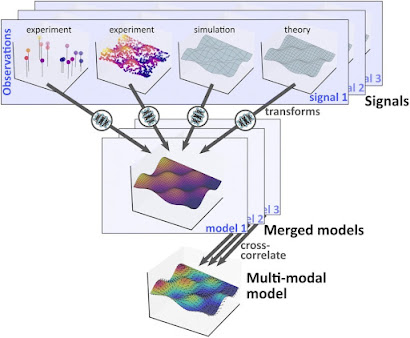DIGITAL LIFE

Artificial imagination...Artificial intelligence (AI) quickly moved from the realm of science fiction to the world of laboratory curiosities, but now it has fully emerged in the real world, becoming part of our daily lives, even helping scientists develop their theories and writers improve their plots.
In the scientific field, the potential is so great that some teams are already building virtual assistants that communicate in common language to help conduct experiments, devise new experiments, raise hypotheses, rearrange atoms and molecules to develop new materials and an almost innumerable list of etcetera.
And that's just the beginning. Professor Kevin Yager, from Brookhaven National Laboratory in the USA, has articulated a comprehensive vision for the role of AI in scientific research, arguing that it is time to think about an "artificial imagination".
He calls it a “scientific exocortex,” where “exo” means outside and “cortex” refers to the information-processing layer of the human brain. Rather than simple chatbots and scientific assistants, the exocortex will be an extension of a scientist’s brain, interacting with it through natural-language conversations, without the need for any invasive brain-computer interface.
“An exocortex, embodied in software, would serve as a new source of thought, inspiration, and imagination,” Yager described. “If we design and build the exocortex correctly, our interactions with it will resemble those ‘aha’ moments we sometimes have when we wake up or while ruminating on a problem. You don’t check out an exocortex; you experience it.”
Exocortex...Yager describes the exocortex as analogous to the layers of the human brain, which have evolved over the course of human evolution to become the information-processing masterpiece it is today. As best we can tell, this brain evolution has involved accumulating new layers, each more sophisticated than the last. The lower part of the brain controls basic survival functions like breathing; other, more advanced layers handle increasingly complicated functions like emotional regulation and language processing. Most importantly, all facets of the brain work together in harmony to form “the human experience.”
“Technologically, we now have the potential to add another outer layer to the brain—one that connects us to AI,” Yager proposes. “And just like the specialized regions of the brain that coordinate to give rise to what we call intelligence, the exocortex will integrate individualized AI capabilities to solve a problem or generate creativity.”
A network of AI agents...In contrast to chat apps like ChatGPT and Gemini, which are interfaces to a single AI system, the exocortex will likely be a collection of dozens of AI agents working together, customized to the individual needs of the researcher.
To achieve this, each agent will need to be trained to perform specific tasks related to the scientific field of interest. A scientific literature agent, for example, could comb through published papers to find an optimal protocol for an experiment, while another AI agent could collect and analyze data from a running experiment. Additional agents could start experiments or simulations, compare findings with previous studies, or even propose ideas for follow-up experiments.
The idea is that all of the tasks of the AI scientific agents would happen together, simultaneously, and without manual intervention, resulting in actionable and, if possible, creative ideas that would then be reported to the human researcher in natural language.
International effort... Of course, making the exocortex a reality will not be easy. While scientists have already designed a multitude of AIs that can interact with a user and complete specific tasks, building a network of AIs that interact with each other is a whole new challenge.
Yager acknowledges that the task of building an exocortex is enormous, and the development effort would need to be shared among scientists around the world, so that individual research groups could leverage their own expertise to design new agents.
If all goes as planned, scientists will eventually have an app store from which they can download AI agents that will enhance the abilities of their own exocortex, similar to how downloading new apps adds functionality to cell phones.
“I expect to see a multiplicative effect,” Yager said. “As scientists simultaneously improve individual AIs and the underlying technology of the exocortex, the capabilities of the exocortex will likely grow much faster than people expect.”
Article: Towards a science exocortex
Authors: Kevin G. Yager
Revista: Digital Discovery



No comments:
Post a Comment